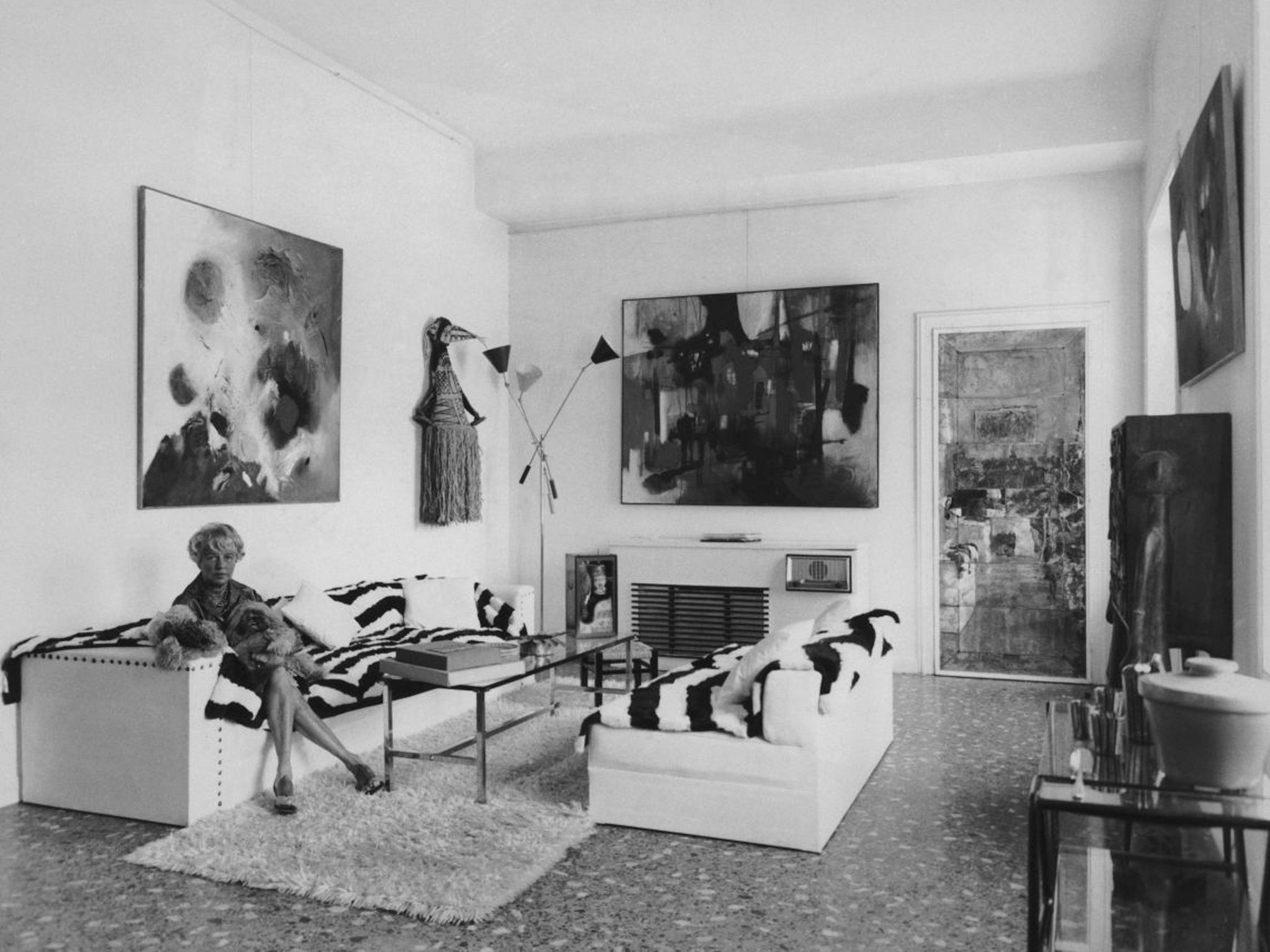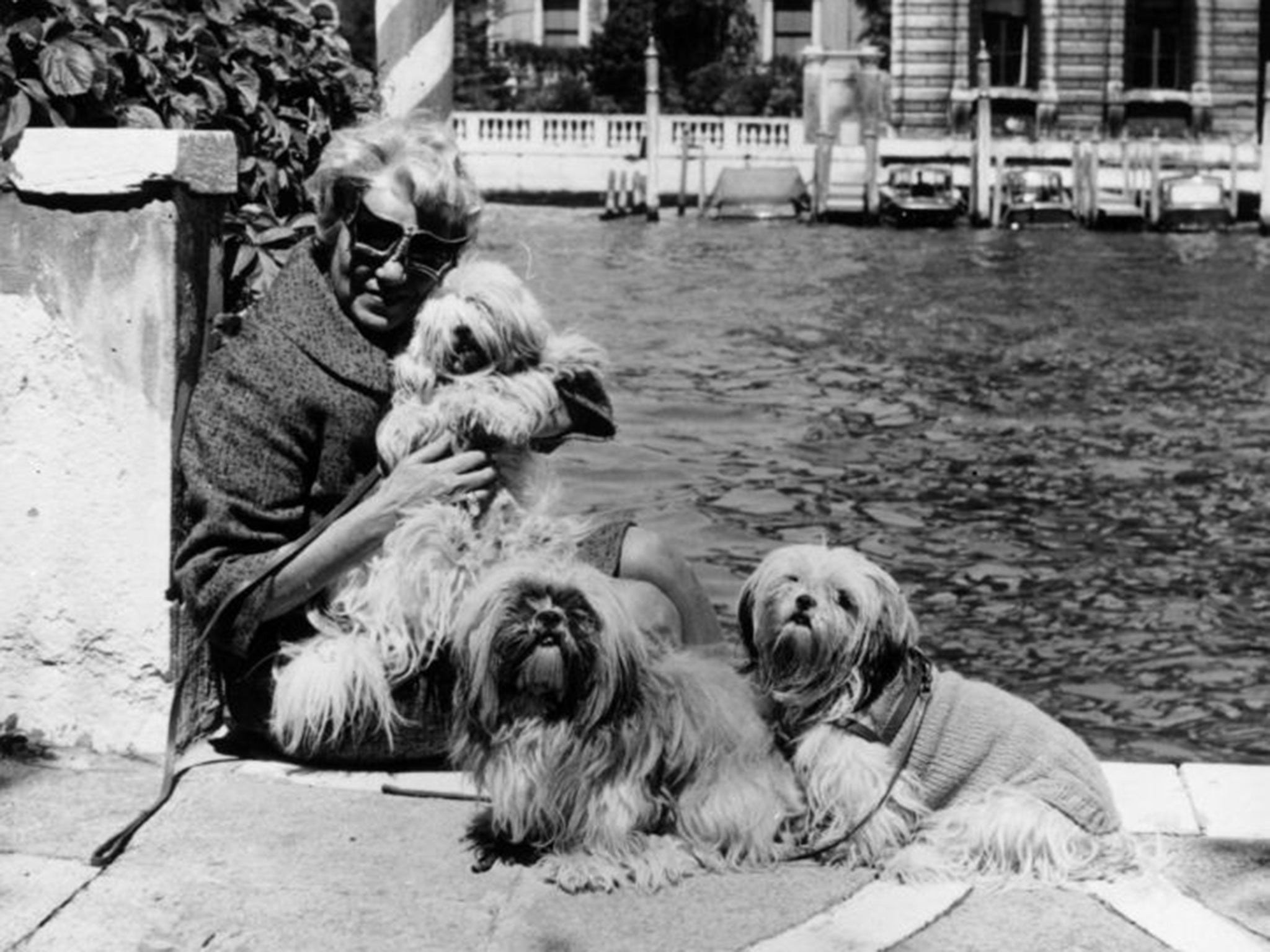Peggy Guggenheim's grandsons launch legal battle over Venice art collection
Sandro Rumney and Nicolas Hélion say Guggenheim's collection of modern art, including masterpieces by Picasso, Pollock and Klee, has not been kept as she decreed on her deathbed

Your support helps us to tell the story
From reproductive rights to climate change to Big Tech, The Independent is on the ground when the story is developing. Whether it's investigating the financials of Elon Musk's pro-Trump PAC or producing our latest documentary, 'The A Word', which shines a light on the American women fighting for reproductive rights, we know how important it is to parse out the facts from the messaging.
At such a critical moment in US history, we need reporters on the ground. Your donation allows us to keep sending journalists to speak to both sides of the story.
The Independent is trusted by Americans across the entire political spectrum. And unlike many other quality news outlets, we choose not to lock Americans out of our reporting and analysis with paywalls. We believe quality journalism should be available to everyone, paid for by those who can afford it.
Your support makes all the difference.The Venice Guggenheim Museum is at the centre of a dispute as descendants of the institution’s founder, Peggy Guggenheim, turn to the courts to decide how her priceless collection is managed.
Two grandsons of the legendary philanthropist, who died in 1979, say her collection of modern art, including masterpieces by Picasso, Pollock and Klee, has not been kept as she decreed on her deathbed, with displayed works from other collections diluting Ms Guggenheim’s “vision”.
The grandson plaintiffs, Sandro Rumney and Nicolas Hélion, want the collection’s original state restored. Their research indicated that in 2013 there were 94 pieces from the Guggenheim collection and 75 works from the Schulhof collection, put together by two American art collectors.

They are also calling for “protection” in the palace garden around a plaque marking Peggy’s ashes – a “grave” they say has been desecrated.
But the New York-based Solomon R Guggenheim Foundation, which now owns the collection, ridiculed the claims of the two plaintiffs, who, it noted, “are descendants of Peggy Guggenheim but are not her heirs and were not mentioned in her will”.
It added: “Despite the frivolous lawsuit and misleading reports in the media, the foundation has worked to make the name of Peggy Guggenheim and the renown of her achievements more celebrated than ever before and will continue to ensure that Peggy Guggenheim’s collection is honoured and preserved.” The foundation said Ms Guggenheim’s sole heir had been her son, Sindbad Vail. His children are not involved in the suit.
The foundation said the complaints in the current lawsuit were essentially the same as those that were put forward, and rejected, by Paris courts in 1992 and 1994. To avoid the legal costs of a further appeal, the factions agreed to a peace deal in December 1996, under which the foundation made a $30,000 (£19,000) contribution toward the attorneys’ fees for the plaintiffs’ failed lawsuit in return for Mr Rumney and Mr Hélion explicitly acknowledging “the exclusive right of the foundation to the exercise of its control” over the collection.
The current case is taking place in France, where Mr Rumney lives. His Paris-based lawyer, Olivier Morice, was not available for comment. But Mr Morice was quoted by AFP as saying that the grandsons’ legal challenge was about “respecting the wishes of Peggy Guggenheim to see the collection intact”.
The Solomon R Guggenheim Foundation said, however, that Ms Guggenheim left it her art collection in 1976, “stating only one purpose, to demonstrate her admiration for the activities carried out by The Solomon R Guggenheim Foundation… concerning the study, the divulgation and the knowledge of works of art, in particular modern works of art, and with the purpose of expanding and fostering such activities in Italy”.
Aged just 13, Peggy Guggenheim inherited vast wealth when her tycoon father Benjamin went down on the Titanic. She later used her fortune to promote contemporary art and to collect works from celebrated figures including Braque, Dali, Miro, Matisse and Kandinsky. The bohemian heiress, who was said to have had more than 1,000 lovers, bought the Palazzo Venier dei Leoni on the banks of the Grand Canal in 1948 and began to display her priceless pieces there. The resulting Venice Guggenheim collection, with masterpieces ranging in style from cubism and surrealism to abstract expressionism, has become one of the most visited cultural attractions in Venice.
Join our commenting forum
Join thought-provoking conversations, follow other Independent readers and see their replies
Comments